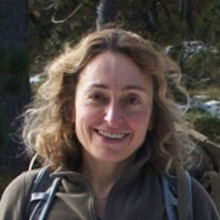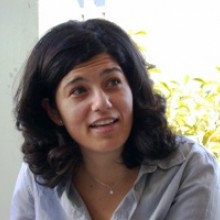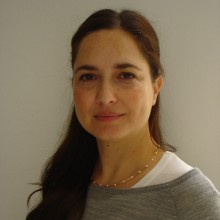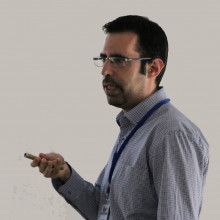Position Description
Combined Additive-Subtractive manufacturing
For the full announcement, follow the link "Related Documents"
Required Qualifications
- Undergraduate degree in Sciences or Engineering (physics, materials science, mechanical engineering)
- Experience in 3D printing combined with laser processing
- Good knowledge of English language
Application Procedure
nterested candidates who meet the aforementioned requirements are kindly asked to submit their applications to the address (hr@iesl.forth.gr), with cc to the Dr Emmanuel Stratakis (stratak@iesl.forth.gr).
In order to be considered, the application must include:
- Application Form (Form Greek or Form English to the left)
- Detailed curriculum vitae (CV) of the candidate
- Scanned Copies of academic titles
- Certificate for enrollment in a master’s program
Appointment Duration
6 monthsPosition Description
Post - doc (θέση 1)
Ο μεταδιδακτορικός συνεργάτης θα απασχοληθεί με τον χαρακτηρισμό υδατογενών πολυουρεθανικών διασπορών (ΕΕ1), με τον χαρακτηρισμό των μικρο-νανοδομών ως προς την λειτουργία αυτοΐασης (ΕΕ2) και με τον χαρακτηρισμό των διασπορών που θα περιέχουν και τον παράγοντα αυτοΐασης (ΕΕ3)
Υποψήφιος Διδάκτορας (θέση 2)
Για το πλήρες κείμενο της πρόσκλησης ακολουθήστε τον σύνδεσμο 'Related Documents'
Related Project
SELFNANOPUD -Required Qualifications
Post - doc (θέση 1)
- Πτυχίο φυσικών επιστημών (φυσική, χημεία, επιστήμης υλικών) ή μηχανικού
- Μεταπτυχιακό σε φυσικές επιστήμες
- Διδακτορικό δίπλωμα σε φυσικές επιστήμες
- Προηγούμενη εμπειρία σε εργαστήρια μελέτης και χαρακτηρισμού πολυμερικών και νανοδομημένων συστημάτων και γνώση σχετικών πειραματικών τεχνικών
- Προηγούμενη εμπειρία σε χημεία υλικών
- Δημοσιεύσεις και συμμετοχές σε συνέδρια
- Συμμετοχή και διαχείριση ερευνητικών έργων
Υποψήφιος Διδάκτορας (θέση 2)
- Πτυχίο φυσικών επιστημών (φυσική, χημεία, επιστήμης υλικών) ή μηχανικού
- Μεταπτυχιακό σε φυσικές επιστήμες
- Προηγούμενη εμπειρία σε εργαστήρια μελέτης και χαρακτηρισμού πολυμερών και υβριδικών συστημάτων και γνώση σχετικών πειραματικών τεχνικών
Application Procedure
Στο φάκελο υποβολής της πρότασης θα πρέπει να εμπεριέχονται τα ακόλουθα:
- Αίτηση (form Greek στην αριστερή στήλη) με αναφορά στον κωδικό της θέσης και στο όνομα του προγράμματος
- Αναλυτικό Βιογραφικό Σημείωμα
- Ευκρινή φωτοαντίγραφα τίτλων σπουδών
- Πρόσφατη βεβαίωση σπουδών υποψήφιου διδάκτορα (για τη θέση 2)
ΥΠΟΒΟΛΗ ΠΡΟΤΑΣΕΩΝ
Οι ενδιαφερόμενοι καλούνται να υποβάλουν τις αιτήσεις τους και όλα τα απαραίτητα δικαιολογητικά, ηλεκτρονικά στη διεύθυνση hr@iesl.forth.gr με κοινοποίηση (cc): στην Δρ Κ. Χρυσοπούλου (kiki@iesl.forth.gr). Οι αιτήσεις θα πρέπει να αποσταλούν με την ένδειξη: «Αίτηση στο πλαίσιο του προγράμματος SELFNANOPUD, της πρόσκλησης εκδήλωσης ενδιαφέροντος με Α.Π. … και κωδικό θέσης … » (όπως αυτός αναφέρεται στον Πίνακα του Παραρτήματος).
Appointment Duration
12 & 6 μήνες, αντίστοιχαFunding

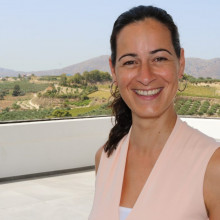
Dr. Anastasia Giakoumaki is currently an experienced Research Assistant at IESL-FORTH. Her research aims at the development of methodologies and instrumentation based on laser spectroscopy techniques (e.g. LIBS, LIF, Raman etc) targeted for applications in the field of heritage science diagnostics. She has worked for years as a Senior Applications Scientist in a company designing and building LIBS systems in the UK after having worked as a Post-Doctoral Researcher in several Spanish universities. She has participated in various analytical campaigns in museums and archaeological sites in Greece, Spain, Italy (Pompeii), Syria and Jordan using LIBS, Raman, XRF and DRIFTS portable instruments and has nearly 30 publications in peer-reviewed scientific journals and books.
Education
- 2008, Ph. D. in Materials Science and Technology, Department of Materials Science and Technology, University of Crete, Greece
- 2003, M. Sc. in Protection of Monuments – Materials and Techniques of Conservation (9.16/10), School of Architecture, National Technical University of Athens, Greece
- 2002, Diploma in Chemical Engineering (7.87/10), School of Chemical Engineering, National Technical University of Athens, Greece
Career
- 2014 – 2020: Senior Applications Scientist, Applied Photonics Ltd, UK
- 2011 – 2014: Contracted Post-Doctoral Researcher, Department of Analytical Chemistry, University of the Basque Country, Spain
- 2011: Contracted Post-Doctoral Researcher, Laser Centre, Polytechnic University of Madrid, Spain
- 2009 – 2010: Marie Curie Post-Doctoral Fellow, Laboratory of Optics, University of Murcia, Spain
- 2004 – 2009: Researcher with scholarship, Institute of Electronic Structure and Laser, Foundation for Research and Technology, Crete, Greece
- Spring semesters 2005 – 2008: Teaching assistant, Laboratory of General Chemistry, Department of Materials Science and Technology, University of Crete, Greece
- Spring semester 2005: Teaching assistant, Laboratory of Methods for the production of soft matter, Department of Materials Science and Technology, University of Crete, Greece
- Winter semester 2004: Teaching assistant, Laboratory of Physics I, Department of Materials Science and Technology, University of Crete, Greece
- 2003 – 2004: Scientific collaborator, Department of Materials Science and Technology, School of Chemical Engineering, National Technical University of Athens, Greece
Interests
- Development of laser spectroscopic instrumentation (hybrid, portable)
- Development of methodologies for a comprehensive characterization of materials in archaeological objects and artworks
- In-situ analysis
- Heritage science diagnostics
Awards/Prizes/Distinctions
- Post-graduate fellowship of the Greek State Scholarships Foundation (2004-2008)
- Second prize on poster presentation under the subject “Spectroscopic analysis using a hybrid LIBS – Raman system”, A. Giakoumaki, I. Osticioli., D. Anglos in the “Euro-Mediterranean Symposium on Laser-Induced Breakdown Spectroscopy - EMS-LIBS 2005” Aachen
- Third prize on poster presentation under the subject “A survey over the capabilities of LIBS in the quantification of archaeological Cu alloys”, A. Giakoumaki, A. Doridot, L. Robbiola, D. Anglos in the “Laser-Induced Breakdown Spectroscopy 2008” Berlin
ΠΡοηγμένο σύστημα συλλογής και διαχείρισης αναλυτικΩν δεδομένων για την ανοιχτή προς το κοινό ΤΕκμηρίωση, και συντήρηση ζωγρΑφικών έργων τέχνηΣ μεγάλων διαστάσεων (ΠΡΩΤΕΑΣ)
MIS 5069984
«Ανταγωνιστικότητα Επιχειρηματικότητα Καινοτομία 2014-2020» ΚΩΔΙΚΟΣ ΠΡΑΞΗΣ ΟΠΣ ΕΣΠΑ
ΔΡΑΣΗ ΕΘΝΙΚΗΣ ΕΜΒΕΛΕΙΑΣ «ΕΡΕΥΝΩ-ΔΗΜΙΟΥΡΓΩ-ΚΑΙΝΟΤΟΜΩ Β’ ΚΥΚΛΟΣ»
The underlying idea of the PROTEAS project is to introduce the public to the work of the art conservator and, through this, in the materials and techniques employed, the historical context of a work of art as well as the message and the expression of the creator. Important for implementing this idea, is to establish an open communication channel between curators, conservators and researchers.
Modern technology supports this communication through
a) portable analytic devices
b) flexible robotic arrangements, and
c) advanced information systems that allow an integrated, innovative approach to documentation, management and presentation of the information gathered during the conservation of artwork.
In this context, the main objective of the project is the development of an Open-Access Workshop (OAW) within the premises of the National Gallery at Athens (NGA), where researchers from IESL-FORTH and INPP-NCSR Demokritos will install innovative analytical systems based on imaging and spectroscopic techniques which, via combined protocols for in-situ application, will integrate and upgrade the current documentation and conservation methodology used by NGA for the integrated study of paintings. The Institute of Computer Science (ICS) of FORTH will coordinate the project and, in collaboration with PRINTEC and Up2Metric, will develop the platform (mechanisms and integrated software) that will ensure a) a robust way to support safe and controlled positioning of the analytical devices at each point of the artwork ensuring reliable operation of the equipment and facilitating the presence of the operator/conservator and b) provide a user friendly acquisition, management and presentation of large amounts of information and data. The concept becomes particularly important in the case of very large paintings, which, to date, could not be studied with conventional protocols. It
is actually the study and conservation of "March 3, 1814", by C. Muller (4.45 × 8.45 sq. meters) an emblematic oil painting of the NGA collection that provides the inspiration and motivation for this research.
The main elements of innovation of OAW include:
• Portable prototype systems and methodology for studying and visualizing paintings in detail:
XRF (MA-XRF) Imaging, Fluorescence Spectroscopy (LED-LIF), Reflection Spectroscopy (FORS) and Short Wavelength Infrared (SWIR) Imaging.
• High precision devices for positioning the diagnostic instruments based on conventional low cost mechanics coupled to pioneering machine vision software. The system will permit simple, fast and safe access at each point of the artwork, while machine vision software will ensure reliable and reproducible positioning of the devices with respect to the points of interest and detection of the area where conservation interventions take place.
• A Semantic content information system and a digital knowledge platform based on international standards for the management of the data produced during all the stages of the scientific work.
• Internet hub, with multilingual interfaces to display and diffuse the IC's activities for a targeted audience, which will allow the conservator to update display and dissemination interfaces.
Overall, the PROTEAS project will produce a unified platform for the acquisition and management of analytical data and documentation of conservation interventions, interpretation and presentation of results. This platform will operate on the basis of openness being able to integrate new instruments and methodologies. The uniqueness of the OAW rests on the fact that it will be open to visitors, whether specialists or the general public, who will be able to follow the progress of the work in real time understanding the essentials of art conservation.
Thus, NGA will become a reference, the crossroad of technology and culture and the grounds where specialists/researchers/scientists can interact and communicate on aspects of diagnosis and conservation of works of art.
Principal Investigator
Scientific Staff
Technical Staff
Research Associates
Alumni

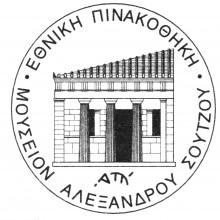

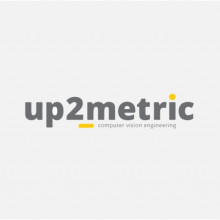
Funding




